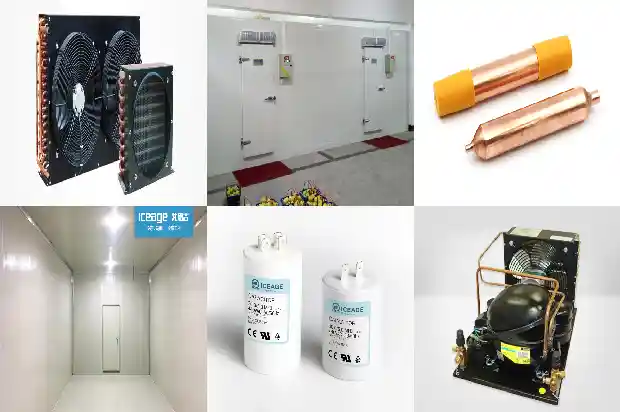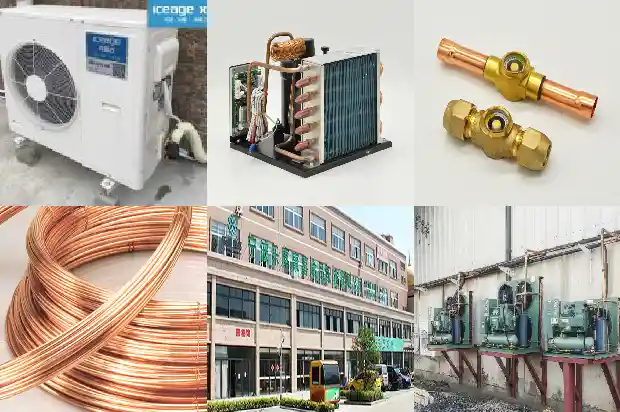Common Causes and Analysis of Compressor Thermal Protection
2024-12-20
I. Common Causes and Analysis of Compressor Thermal Protection:
- The return gas volume of the system is insufficient, and the motor is not adequately cooled.
- The power supply voltage is abnormal, there is a phase loss, or the motor is overloaded.
- The condensing pressure is too high, etc.
- Overheating phenomena such as high motor temperature, excessive exhaust temperature, and burnt lubricating oil are caused.
II. Common Causes and Analysis of Poor Refrigeration Effect:
- The expansion valve is opened too wide or too narrowly.
- The refrigeration system is blocked and not smooth, or the relevant valves are not opened or not fully opened, and the solenoid valve fails, etc.
- There is insufficient refrigerant.
- There is a fault in the internal structure of the compressor.
III. Common Causes and Analysis of Severe Frost Formation on the Evaporator:
- The air volume of the evaporator fan is insufficient, resulting in poor heat exchange.
- The evaporator is too dirty, which affects the heat exchange of the evaporator.
- Too much refrigerant enters the evaporator, leading to insufficient heat exchange.


- The working condition temperature is too low and the humidity is too high.
IV. Common Causes and Analysis of Excessively High Suction Temperature of the Compressor:
- There is insufficient refrigerant, and the refrigerant has already become overheated in the evaporator.
- The expansion valve or the pipeline is blocked, resulting in insufficient refrigerant in the evaporator.
- The opening degree of the expansion valve is too small or the throttling mechanism fails.
- The suction pipe is too long or the thermal insulation of the suction pipe is poor.
V. How to Judge the Refrigerant Charge Amount
- Weighing Method: The most accurate and scientific way is the weighing method. Just charge the refrigerant according to the indicated charge amount on the nameplate of the refrigeration equipment by weighing.
- Besides the "Weighing Method", there are also commonly used methods for judging the charge amount, such as:
- Sight Glass Method,
- Ammeter Method,
- Pressure Gauge Method,
- Return Gas Superheat Method.
Related Articles
- What Are the Common Causes of Cold Air Blower Noise?
- Air - conditioner Low - pressure Alarm? These Nine Common Causes
- What Are the Causes of Scroll Compressor Damage?
- Causes and Prevention of "Primary Condensation" and "Secondary Condensation" in Fan - Coil Units
- 10 Symptoms and Causes of Abnormal Frosting in Heat Pumps
- Common Causes and Analysis of High and Low Pressure Alarms
- 4 Points on Causes of Water Leakage in Closed Cooling Towers
- Analysis of Causes for Safety Valve Leakage
- What Causes Noise in Pressure Reducing Valves?
- Causes and Solutions for Elevated Pressure in Cold Storage
- Common Causes of Frost Build-up in refrigerant evaporators
- What Causes Poor Refrigeration Effect of Refrigerated Trucks?
- Common Causes of Air Conditioner Compressor Failures
- Analysis of Seven Reasons for Ice Formation in Computer Room Air Conditioners
- Analysis and Troubleshooting of Common Faults in Air - source Heat Pumps
- Analysis of 6 Components in Air - cooled Multi - split Systems
- Analysis of Advantages, Disadvantages and 34 Common Components of Multi - split Air Conditioners
- Analysis of Common Faults in Compressor Overcurrent and Burnout
